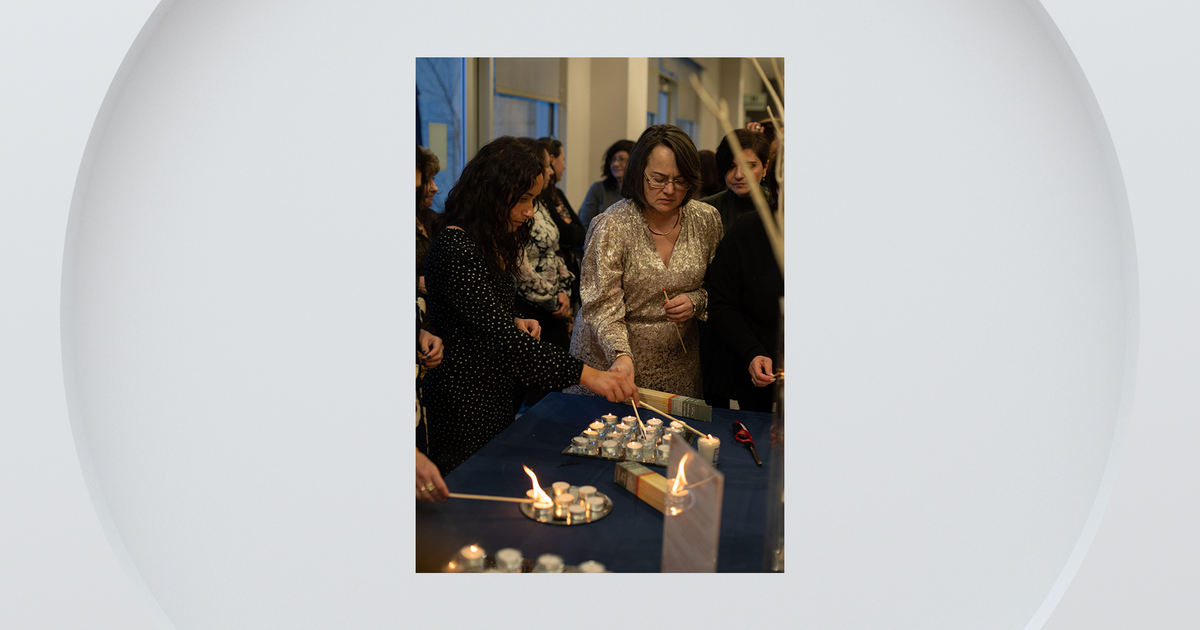Agriculture Not The Only Fashionable Major At CSU
FORT COLLINS, Colo. (AP) - Pause a moment and reflect on Colorado State University's original moniker: Colorado Agricultural and Mechanical College, or Colorado A&M. At a university so steeped in ag tradition, visions of students in cowboy hats and Carhartts may come to mind.
And while CSU's character has become more complex, there's one group on campus whose work stands in stark visual contrast to those long-standing roots. They are students passionate about fashion: all its nuts and bolts and the unseen work often taken for granted by consumers who walk into a store to pick out a shirt .
A majority of Rams studying apparel design, production and merchandising are learning about the industry's ready-wear side, department Instructor and Internship Coordinator Carol Engel-Enright said. As the name suggests, that's clothing and merchandise ready to wear off the racks or carry out of the store.
There's also a small percent learning the intricacies of couture - the sort of high-fashion numbers strutted down runways.
But roughly a third play an integral role in designing outdoor apparel Coloradans wear every day to the yoga studio, cycling through the foothills and shredding down the slopes.
"We're actually making something that people are wearing," said Anna Rieder, 21, a soon-to-be CSU design and merchandising graduate who landed a job at Spyder headquarters in Boulder.
Raised in Louisville, the athlete swam and ran in high school but in recent years has gravitated toward yoga and snowboarding.
When she started snowboarding at 16, she had no idea what counted for good equipment, and functionality was "more important than how I looked." Now she works for a company focused on ski-wear, a world in which some jackets are comprised of 155 individual pieces and picking just the right type of waterproof materials, finishes, cord-locks and zippers is key.
Rieder is an accessories developer for Spyder, long known for its ski and snowboarding apparel. After a merchandiser works with designers to come up with the vision for the latest gloves and hats, she takes measurements and figures out what materials should be used to bring them to life.
As an intern at Spyder, Rieder helped develop this season's gear and was excited to see people wearing those products on the slopes. Her reaction?
"Oh my gosh, I was just doing a prototype for that, or taking pictures of it," she said enthusiastically over the phone.
Rieder said, while she has no idea what her life will look like 10 years from now, she's looking forward to getting herself a "whole Spyder outfit," complete with gloves and a hat she helped make.
Logan Garey is another among a handful of CSU students whose work focused on what people wear outdoors, around town and to work out. Now a Category 1 USA Cycling racer, the CSU graduate has always found things in life he would have designed differently, "from a faucet to the layout of a building."
"Since I'm a cyclist, anything I design has to have a purpose that is functional first, with the aesthetic to follow," he said in an email to the Coloradoan. That means designing a beautiful garment but adding "something simple like venting in a shirt or jeans or a possible hidden zippered pocket to safely store things."
Some may know Pearl Izumi for its high-end cycling suits, while others might have a pair of the company's biking gloves. While interning there two summers ago, Garey analyzed biking shorts for imperfections and coordinated fit sessions with models.
Activewear garments have to move with athletes as they scale rock faces or stretch into twisty yoga poses, Garey said. That means different fabrics (such as knits and Gortex) and technology (such as equipment to make seams waterproof) are involved than are when making casualwear or a man's dress coat, where range of motion isn't as varied.
Engel-Enrigh says she first noticed the shift from function only to more fashionable outdoor/activewear a few years ago on a trip to New York.
Outer and activewear made its way onto the floor at Bloomingdale's, and men on Wall Street wore jackets made by The North Face. Patagonia started to gain notoriety, Aspen started its own fashion week a few years back and influences from Europe and the Swiss Alps started to spread.
"That's when it moved off the slopes and onto the streets," she said, noting also the desirability of the nature-centric Colorado lifestyle.
As for CSU, that change was sparked by a visit from alumni Joshua Bridgeman, product development manager at The North Face.
"I think it opened a lot of eyes," said Rieder, one of many students inspired by Bridgeman's talk to design outerwear.
"People didn't really think about that before," she added.
Since, the department has remodeled its construction labs, Engel-Enright said, and its members are writing grants to bring in equipment such as seam welders students can use to waterproof garments.
Bearing those changes in mind - and looking at all opportunities students have through the program - Engel-Enright believes more and more people are becoming aware of what she used to consider CSU's "best-kept secret."
"I think the secret's finally getting out."
- By MADELINE NOVEY, The Coloradoan
(© Copyright 2013 The Associated Press. All Rights Reserved. This material may not be published, broadcast, rewritten or redistributed.)



